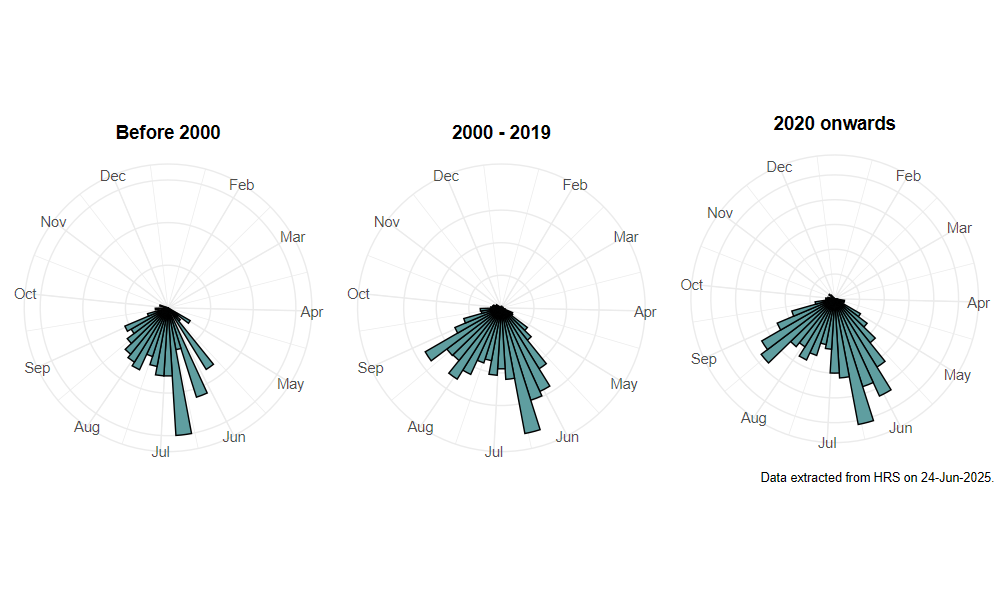Riponnensia splendens (Meigen, 1822)
Identification
Identification difficulty = 2. ![]()
![]() according to Ball & Morris, 20241
according to Ball & Morris, 20241
Synonymy
Orthonevra splendens (Meigen) in Stubbs & Falk (1983)2.
Biology
The larva is aquatic, occurring in very shallow, slow moving water with accumulations of woody debris. It is found in marshes and fens (especially close to trees or scrub), springs and seepages in woodland and along farm ditches beside hedgerows. Adults are found amongst vegetation close to water or settled on the foliage of trees and bushes. They frequently visit flowers, especially buttercups Ranunculus sp. and white umbels, but also a variety of others.
Flight period
The following plots show the number of unique records per week excluding those reported to be of immature stages.

Distribution
Widespread and common in the lowlands of the southern half of Britain, scarcer in the north, although extending into eastern and Scotland including the Soey Valley.

Trends
The following plots show the Frescalo TFactor vs year and a map of the rescaled frequency (all records) for the species.